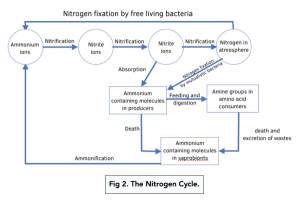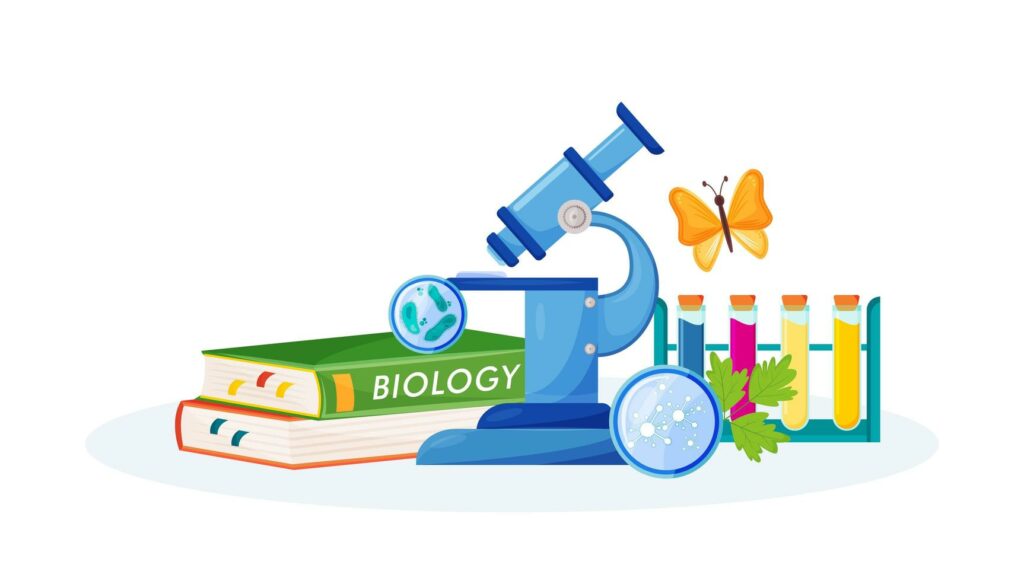Nitrogen Cycle: Fixation and Ammonification (A-level Biology)
Nitrogen Cycle: Fixation and Ammonification
Nitrogen Cycle
Overview of the Nitrogen Cycle
Nitrogen is fundamental to living organisms to create proteins and nucleic acids (DNA and RNA). Plants and animals can’t use nitrogen gas – the form that nitrogen is found in the atmosphere. It must be converted into nitrates by bacteria first.
The nitrogen cycle demonstrates the movement of nitrogen from the atmosphere into the soil, where is it utilised by bacteria and plants.

There are four main biological processes in the nitrogen cycle:
- Nitrogen Fixation
- Ammonification
- Nitrification
- Denitrification
Nitrogen Fixation
This is where nitrogen fixing bacteria convert nitrogen gas into ammonia, which forms ammonium ions (NH4+).
An example of this kind of bacteria is Rhizobium, which is found in the root nodules of leguminous plants. Rhizobium are mutualistic:
- The bacteria provide the plant with nitrogen compounds
- The plant provides the bacteria with carbohydrates
2. Ammonification
Organic material is broken down by saprobiotic bacteria to release ammonium ions back to the soil.
-
- Plants use nitrates to form proteins and nucleic acids etc.
- Consumers will digest the plant material to obtain this.
- This nitrogenous organic material (dead plants, dead animals, waste) is turned into ammonia by saprobionts, which goes on to form ammonium ions.
The nitrogen cycle is a continuous process that involves the transformation of nitrogen between different forms in the environment, including the atmosphere, soil, water, and living organisms. It is an important biogeochemical cycle that is essential for life on Earth.
Nitrogen fixation is the process of converting atmospheric nitrogen gas (N2) into forms that can be used by living organisms, such as nitrates (NO3-) and ammonia (NH3). This process is performed by certain bacteria in the soil, including nitrogen-fixing bacteria, and by lightning.
Ammonification is the process of converting organic nitrogen compounds, such as proteins, into ammonia (NH3) through the action of decomposers, such as bacteria and fungi. This process is an important step in the nitrogen cycle because it releases nitrogen in a form that can be taken up by plants.
The nitrogen cycle supports life on Earth by providing plants and other organisms with the nitrogen they need to grow and produce essential organic compounds, such as proteins and DNA. The nitrogen cycle also helps regulate the amount of nitrogen in the environment, ensuring that it is not depleted or accumulated in harmful amounts.
Human activities, such as the use of synthetic fertilizers, the burning of fossil fuels, and deforestation, can have a significant impact on the nitrogen cycle. These activities can alter the balance of nitrogen in the environment, leading to the overproduction of nitrogen compounds and the release of harmful pollutants, such as nitrogen oxides.
Bacteria play a critical role in the nitrogen cycle by performing key steps in the process, such as nitrogen fixation and ammonification. Nitrogen-fixing bacteria, such as Rhizobia, convert atmospheric nitrogen into forms that can be used by plants, while decomposer bacteria and fungi convert organic nitrogen compounds into ammonia.
Understanding the nitrogen cycle is important in biology because it provides a framework for understanding the role of nitrogen in the environment and how it affects the growth and survival of plants and other organisms. This knowledge is crucial for managing the nitrogen cycle and ensuring the health of ecosystems and the sustainability of life on Earth.






Still got a question? Leave a comment
Leave a comment